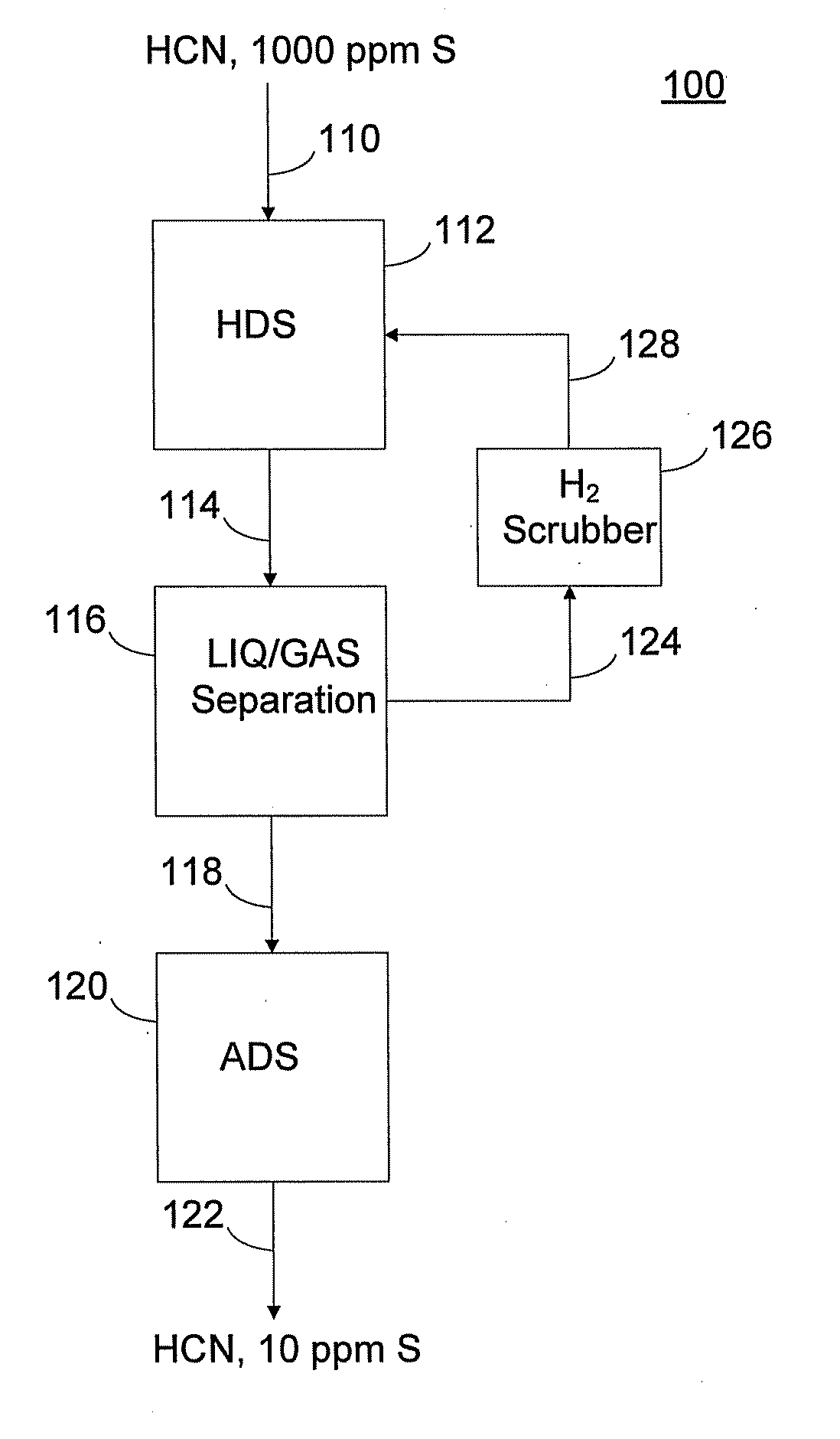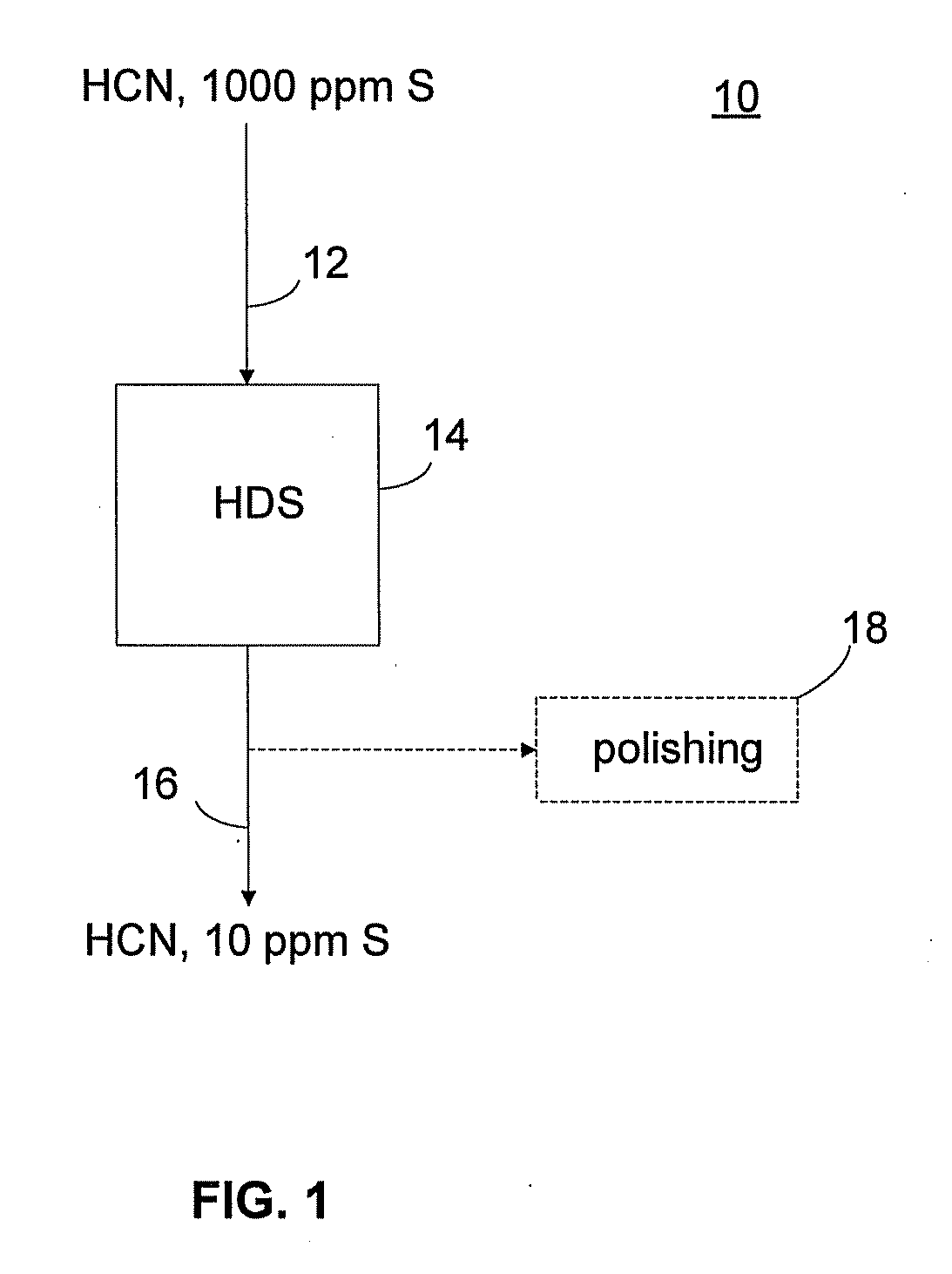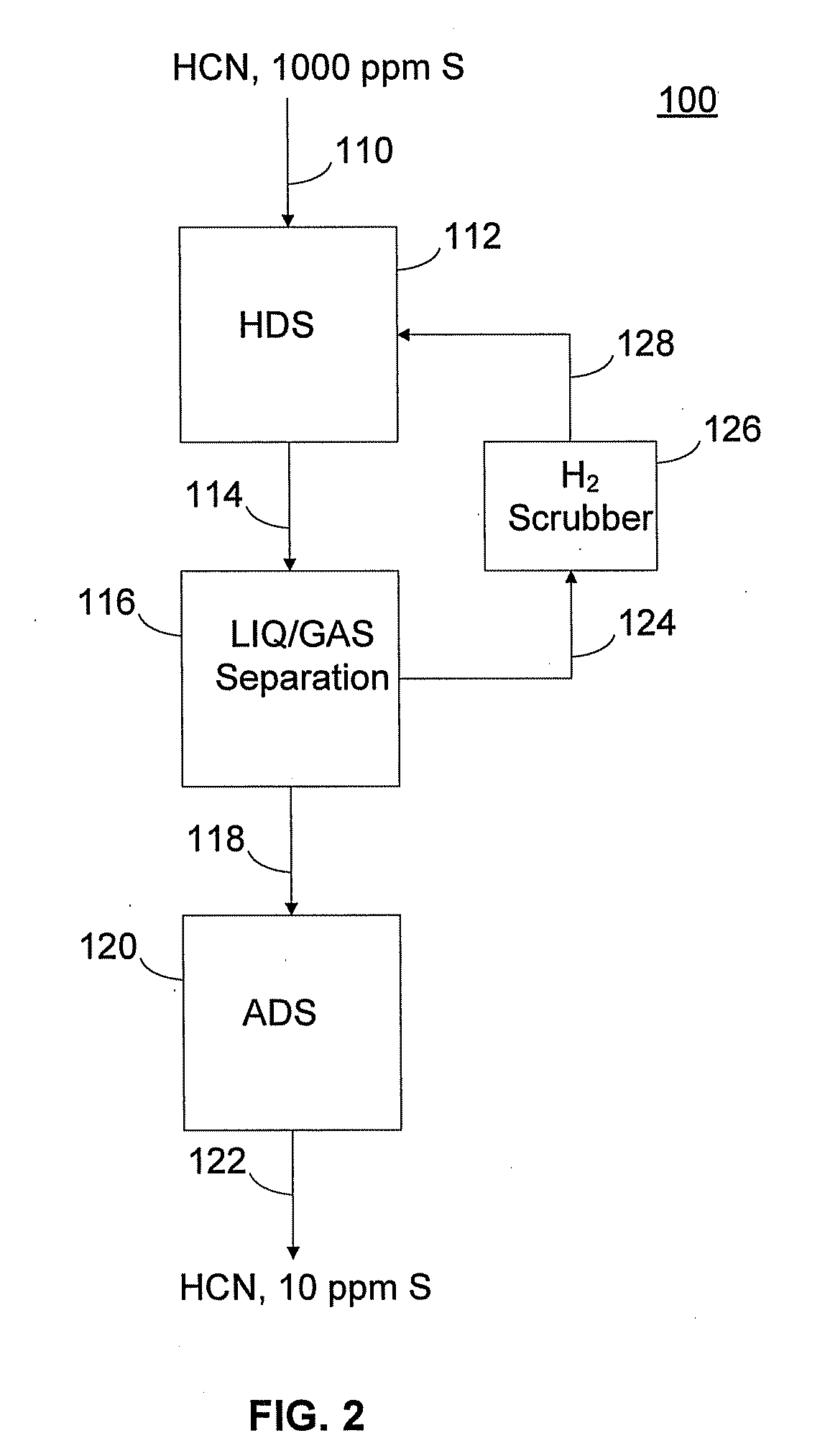Process to produce low sulfur catalytically cracked gasoline without saturation of olefinic compounds
a technology of catalytic cracking and low sulfur, which is applied in the field of hydroprocessing catalysts, can solve the problems of reducing the overall octane rating of feedstock, and affecting the overall economy of the refining process, so as to reduce the sulfur content and reduce the sulfur content. , the effect of low sulfur
- Summary
- Abstract
- Description
- Claims
- Application Information
AI Technical Summary
Benefits of technology
Problems solved by technology
Method used
Image
Examples
example
[0062]A full range cat naphtha (FRCN) feedstock was distilled to produce an overcut heavy cat naphtha (HCN) fraction having a boiling point range between approximately 95° C. and 230° C. This can be referred to as overcutting because the HCN fraction has a final boiling point that is higher as compared to the conventional final boiling point of HCN. Thus, the overcut HCN contains significant amounts of sulfur from the full range CCG, and significantly higher amounts of sulfur than a conventional HCN fraction. Typically, sulfur species are most prevalent in the cut in the fraction having a boiling point range from about 160° C. to 230° C. By overcutting in the distillation section, the majority of the sulfur species have been directed into the overcut heavy cat naphtha fraction. Properties of the initial FRCN feedstock and the separated HCN fraction are provided in Table 1. As shown in Table 1, the HCN fraction has an increased concentration of aromatics, when compared to the initial...
PUM
| Property | Measurement | Unit |
|---|---|---|
| temperature | aaaaa | aaaaa |
| temperature | aaaaa | aaaaa |
| pressures | aaaaa | aaaaa |
Abstract
Description
Claims
Application Information
 Login to View More
Login to View More - R&D
- Intellectual Property
- Life Sciences
- Materials
- Tech Scout
- Unparalleled Data Quality
- Higher Quality Content
- 60% Fewer Hallucinations
Browse by: Latest US Patents, China's latest patents, Technical Efficacy Thesaurus, Application Domain, Technology Topic, Popular Technical Reports.
© 2025 PatSnap. All rights reserved.Legal|Privacy policy|Modern Slavery Act Transparency Statement|Sitemap|About US| Contact US: help@patsnap.com



